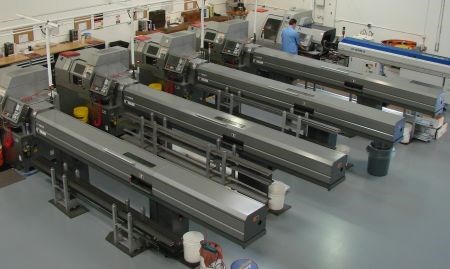Bar Feeder Selection
Many factors go into determining the best bar feeder fit for a shop, including applications, part length and rpm requirements, bar loading times, and setup times.

Many factors go into determining the best bar feeder fit for a shop. The machine tools that are being used, the applications that are running, and floor space can all be considerations. Productivity factors such as bar loading time and setup time, as well as part length and rpm requirements are significant. Part quantities and cycle times should also affect the decision, along with the amount of untended machining that is desired.
One of the biggest differences in bar feeders is length. Will a short, spindle-length bar feeder do the job, or is a 12-foot (or longer) capacity bar feeder more suitable? The material utilization advantages provided by the capacity of the longer bar feeders vividly demonstrate this design’s strengths, particularly for untended operations. The advantages of the short bar feeders are often overshadowed. Here is a list of some of the factors for which short bar feeders can provide an advantage.
- Faster change-over and better material handling facilitate short-run work that requires frequent setup changes.
- Shorter bar lengths reduce whip and vibration, allowing higher rpm and often providing better dimensional accuracy and surface finish.
- The smaller units require less floor space and generally are less expensive.
For a thorough discussion of the factors that need to be considered when choosing a bar feeder, read “The Long and Short Of Bar Feeder Selection.” More detail of the advantages a short bar feeder can bring to a shop can be found in “Why Short Magazine Bar Loaders are Efficient.” More information about bar feeders can be found in Production Machining's Bar Feed Zone.



